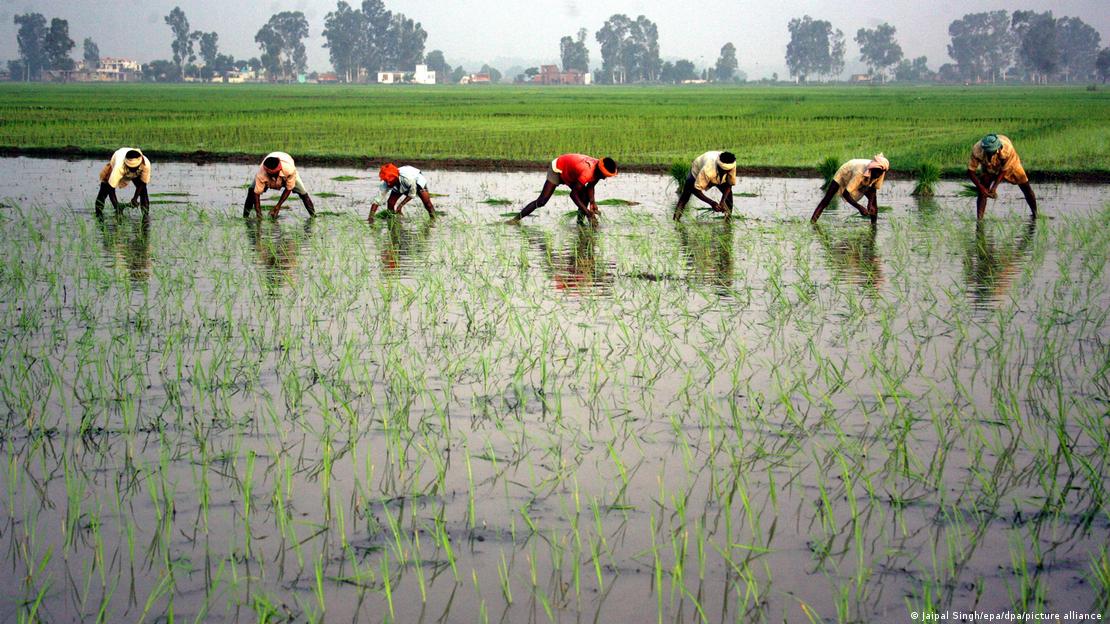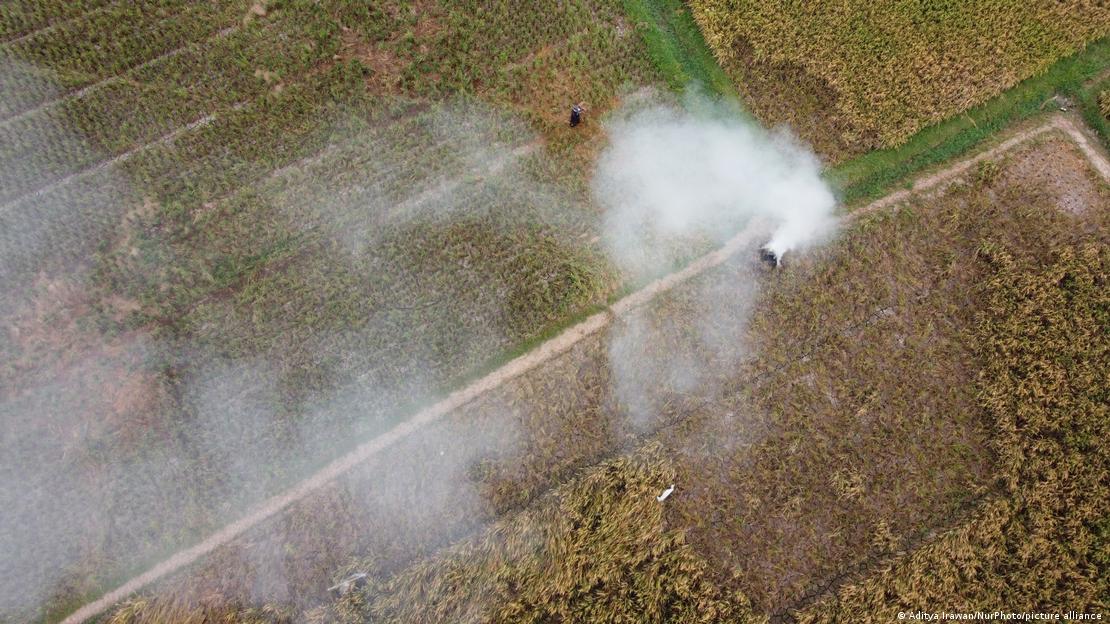Rice fields emit huge amounts of methane into the atmosphere, but alternative means of production could dramatically alter this.
Unlike other grains, rice is a semi-aquatic plant grown in flooded fields under a layer of standing water. This feeds its voracious thirst and suppresses weeds, while also protecting against infections. Before the advent of synthetic fertilizers, growing rice in floodplains also capitalized on the nutrient-rich sediments washed in by rivers.
But as oxygen levels deplete under that layer of water, microbes that feed on organic matter start emitting vast quantities of the turbocharged greenhouse gas methane —a greenhouse gas vastly more potent than carbon dioxide.
The effect is so powerful that rice production accounts for about 10% of global methane emissions and is responsible for as much as 15% of all emissions in some south-east Asian countries. In Vietnam, for example, growing rice emits more greenhouse gases than the entire transport sector.
As such, tackling the rice industry could play an important role in some countries meeting their Paris climate commitments.
What’s the solution?
A relatively solution is to drain the fields a few times per season and allow the soil to replenish its oxygen. This suppresses the methane-producing bacteria in the soil, allowing the more climate-friendly bacteria to take over again.
“If you remove the water layer for a few days, methane emissions go down,” said Bjoern Ole Sander, senior scientist at the International Rice Research Institute (IRRI), who is based in Vietnam.
Draining and reflooding the fields three or four times during the growing season can reduce methane emissions by at least 50%, according to Sander.
The technique, which is known as alternate wetting and drying (AWD), sees farmers flood the fields to about 5-7 centimeters, wait until the water drops to 10 to 15 centimeters below the soil surface, and then reflood them.
Benjamin Runkle, associate professor at the University of Arkansas in Fayetteville, has been researching this approach in the southern state of Arkansas — where half the country’s rice is grown, mostly in massive farms.
“A field could easily be 40 to 80 acres. A farm could be several thousand acres,” Runkle said. “A human hand doesn’t touch a plant.”
In the highly mechanized farms of Arkansas, Runkle has shown with new sensing techniques that AWD can reduce methane emissions by as much as 64%.
In countries such as Vietnam, Thailand and Cambodia — where rice is grown almost exclusively on tiny farms — it can be difficult to implement rigorous controls.
Nonetheless, even a crude implementation of this technique can have dramatic effects.
“There’s a lot of freedom for the farmer to adapt this approach to their needs and their local conditions,” Sander said. Just doing one cycle of draining a season can still reduce methane emissions by 30-40%.
And it does this without a significant impact on yields.
What’s the catch?
The main limitation of the technique is that it doesn’t work during the rainy season of southeast Asia.
“Even if they stop irrigating their fields, there is just a lot of rain, so the fields don’t dry out,” Sander said. “So for those seasons … we need to look for other options.”
It can also be risky for farmers in areas without good controls of their water supply, according to Arkansas’ Runkle. And incentivizing farmers to change their traditional practices can be tricky, as they may fear a loss in yield.

But some projects have been established to sell the emission losses as carbon credits for businesses seeking to offset their own emissions, according to Vikash Talyan, from the carbon credit certification agency Gold Standard.
In one project certified by Gold Standard, about 250 groups of farmers working 16,250 hectares of fields in the Indian state of Maharashtra are switching to AWD techniques to generate carbon credits. The project has the added benefit of reducing water use and adapting to future climate change risks, while providing income to the participating groups.
Each year, the project is estimated to offset about the equivalent of 60,000 tons of carbon dioxide — roughly what humanity emits in a minute from burning fossil fuels.
What else can farmers do to reduce methane?
Another technique is known as furrow irrigation, in which rice is planted in long rows of dirt mounds and the channels between them are flooded, allowing oxygen into the soil and reducing methane emissions.
The method has become popular in US regions where rice and soy crops are rotated, as it saves labor from deconstructing levees and it conserves water. It has also proven easier to implement in mountainous areas of China, where interconnected farms struggle to use alternate wetting and drying.
After water management techniques, the most effective strategy is to remove the food the microbes are feeding upon — the leftover straw from the previous harvest.
One way to do this is to burn off the straw, though this has significant air-quality and health impacts. It is far less damaging to physically remove the bulky material that would otherwise be left under the flood water.
The IRRI and other organizations have been working to incentivize farmers to carry out this laborious task, by finding financially beneficial uses for the material.
Over the past decade, straw balers have sprung up across the Mekong Delta, catering to farmers seeking to sell their straw. It can then be turned into fertilizer for other crops, or used as a growing medium for valuable mushrooms, and can even be turned into a plastic-like material for disposable utensils.

Are there any other options?
Water and straw management techniques offer the most significant reductions in methane production, but switching from cheaper urea fertilizers to more expensive ammonium sulfate can also help.
Scientists are also researching various soil additives and alternate rice varieties that could reduce emissions, possibly by altering root structures. And growing higher-yield varieties of rice can also produce more grain for a similar level of emissions.
Implementing all these changes will not reverse global warming alone. The methane produced by rice pales when compared to the fossil fuel industry, cattle farming and landfill. But every bit counts, and reducing global warming by even fractions of a degree can have huge impacts.
“It makes a big difference in rice producing countries. You will be able to bring down the greenhouse gas emissions of many rice producing countries quite significantly,” Sander said then quoting UN Secretary General Antonio Guterres — ‘our world needs climate action on all fronts – everything, everywhere, all at once.'”
Source : DW

